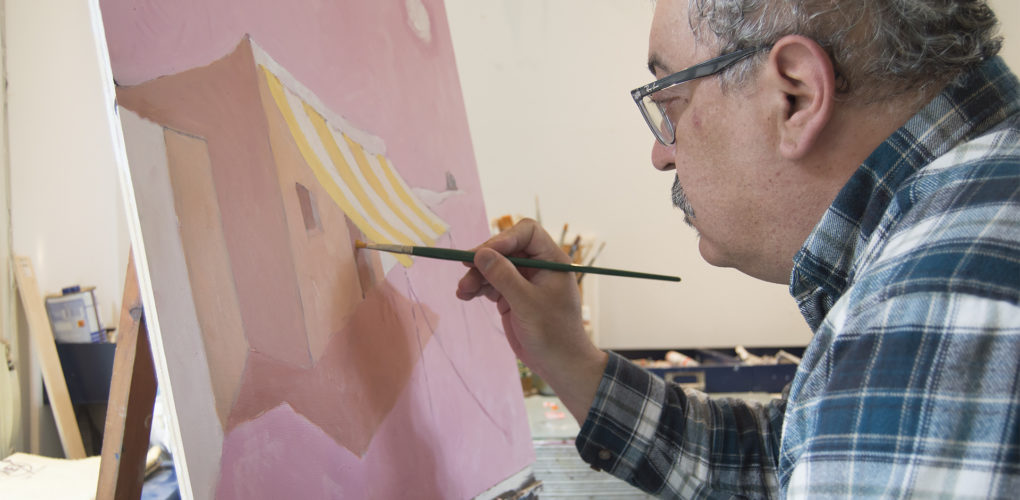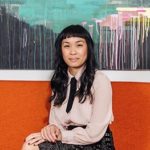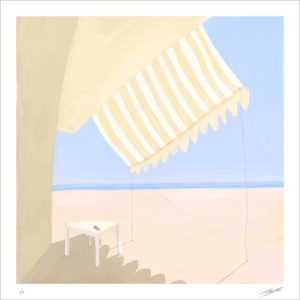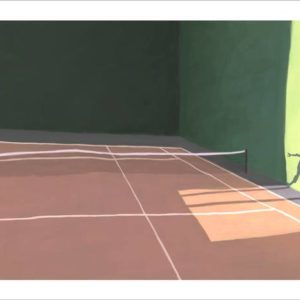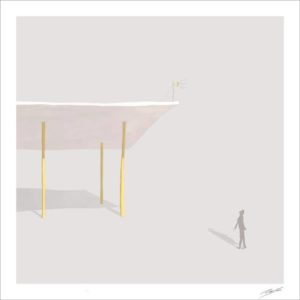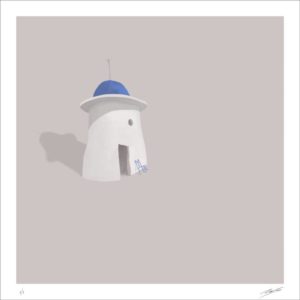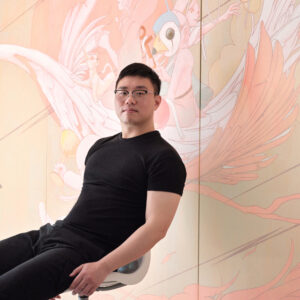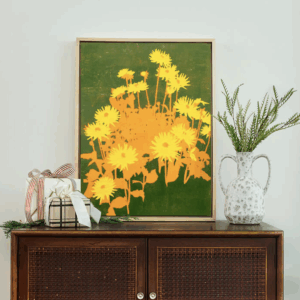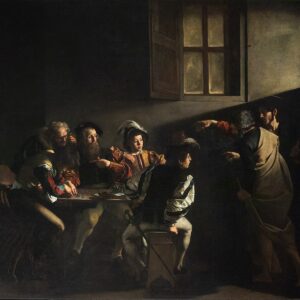Inside the Studio
 Redefining ‘Digital Landscape’ with Nacho Frades
Redefining ‘Digital Landscape’ with Nacho Frades
What are the major themes you pursue in your work?
Stillness, happiness, calm, and meditation, all of them distilled into an architectural expression. I paint in many styles, but architecture is my main form of expression. That said, it’s just an expression: I don’t paint walls, I paint light, temperature, and calmness. I understand painting as expressing an unseen world, one that can be shown to others through art. It’s similar to music or a song: a song can be written but it needs someone to sing it to “show” it to others. Art is the best gift I can give to another person, I cannot give any other thing but art. Civilizations don’t give their economy or their plumbing to the future – a civilization gives it’s art.
How did you first get interested in your medium, and what draws you to it specifically?
I began to paint on the computer in 1987, using an experimental tool for Electronic Arts called DPaint. Later, when I worked in computer-animated film, I experimented in Photoshop. But my formative development came from my work in oils, starting at 10 years old, and spanning 40 years. What draws me to digital painting is its flexibility, and that we live in a practically digital world. In addition, printing technology is outstanding now – I work with a technology capable of impressive color reproduction, and durability of roughly 200 years. Also, I paint a lot, I have more than 500 artworks, which is almost impossible to accomplish with the drying times of oils. I can’t wait, I have a lot of ideas and oils are too slow for me. (I don’t like painting with acrylics, they are too muted).
How has your style and practice changed over the years?
When I began to paint, I did figurative oil painting to learn from nature, and I copied works of Goya, Velázquez, or El Greco. I spent a lot of time in Madrid museums studying classical and modern paintings (Sorolla, Van Gogh, Monet, Hopper, Picasso, etc.) to learn their techniques and secrets. It has not been easy, it’s a path with a lot of frustration and huge happy moments. When this step was finished, I began to paint my own ideas, and that’s what I have done ever since. At first I painted in a very dark style, but over the years I have turned to paint pure light, color and happiness while maintaining the stillness and sensation of frozen time. Now I want to produce something new in the viewer, a new sensation, a new experience.
Can you walk us through your process? Do you begin with a sketch, or do you just jump in? How long do you spend on one work? How do you know when it is finished?
I always begin my works with pencil – there is no digital tool that can achieve the beauty and flexibility of a pencil. Then I scan it and blow it up at a huge resolution and begin to paint. I paint without “layers”. It’s direct painting, with no computer aids. I don’t want the computer to paint for me, I am the painter, the computer is only a technique. In fact, I use the computer in an “oil-ish way”. I don’t use weird tricks to achieve goals that result in works with a sad “digital flavor”. When the work is printed, I paint over it with watercolors and pencil to finish it. This produces a work that is, in a way, impossible to copy.
How long do you spend on one work? How do you know when it is finished?
Well, I can spend anywhere from three days to a month, it’s not a fixed timeline. There are works that ask for a long process and others that are finished in a week. I know when a work is finished because I get a specific sensation – there is no rationality. A work is finished only when it’s impossible to improve it. This is my rule.
If you couldn’t be an artist, what would you do?
As an artist, it is impossible for me to imagine any other reality. I have been a painter since birth. When I was two or three years old, I painted on the walls, on pillows, on clothes, all to the despair of my mother.
Prefer to work with music or in silence?
Music! For sure, I need music to paint. My taste is wide, ranging from classical music, to jazz, to ancient music (like Sumerian music), Hindu, etc. The paradox is that when I am painting I don’t actually hear it, but it must be present. Music is the Queen of the Arts.

